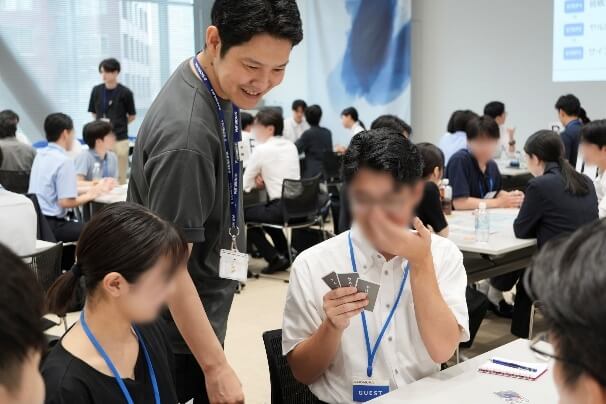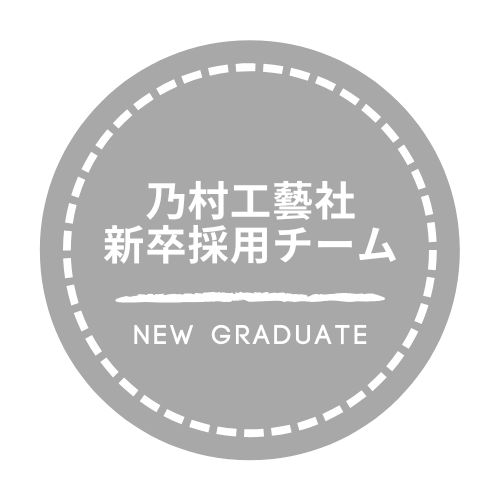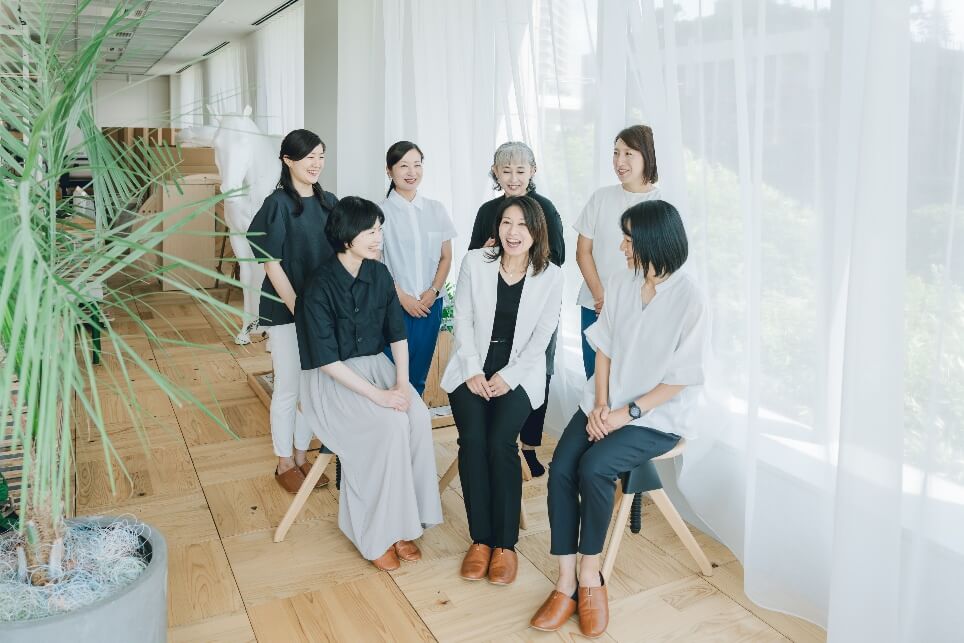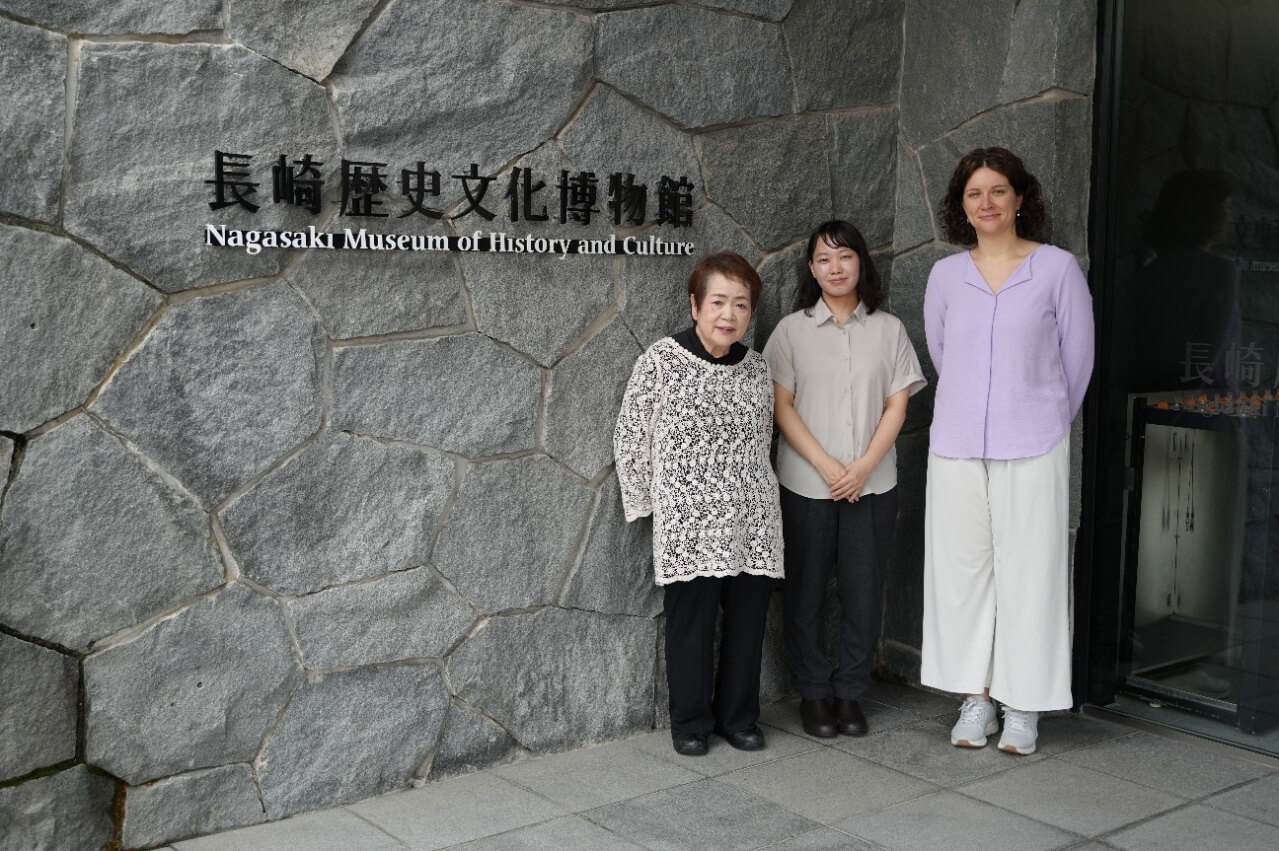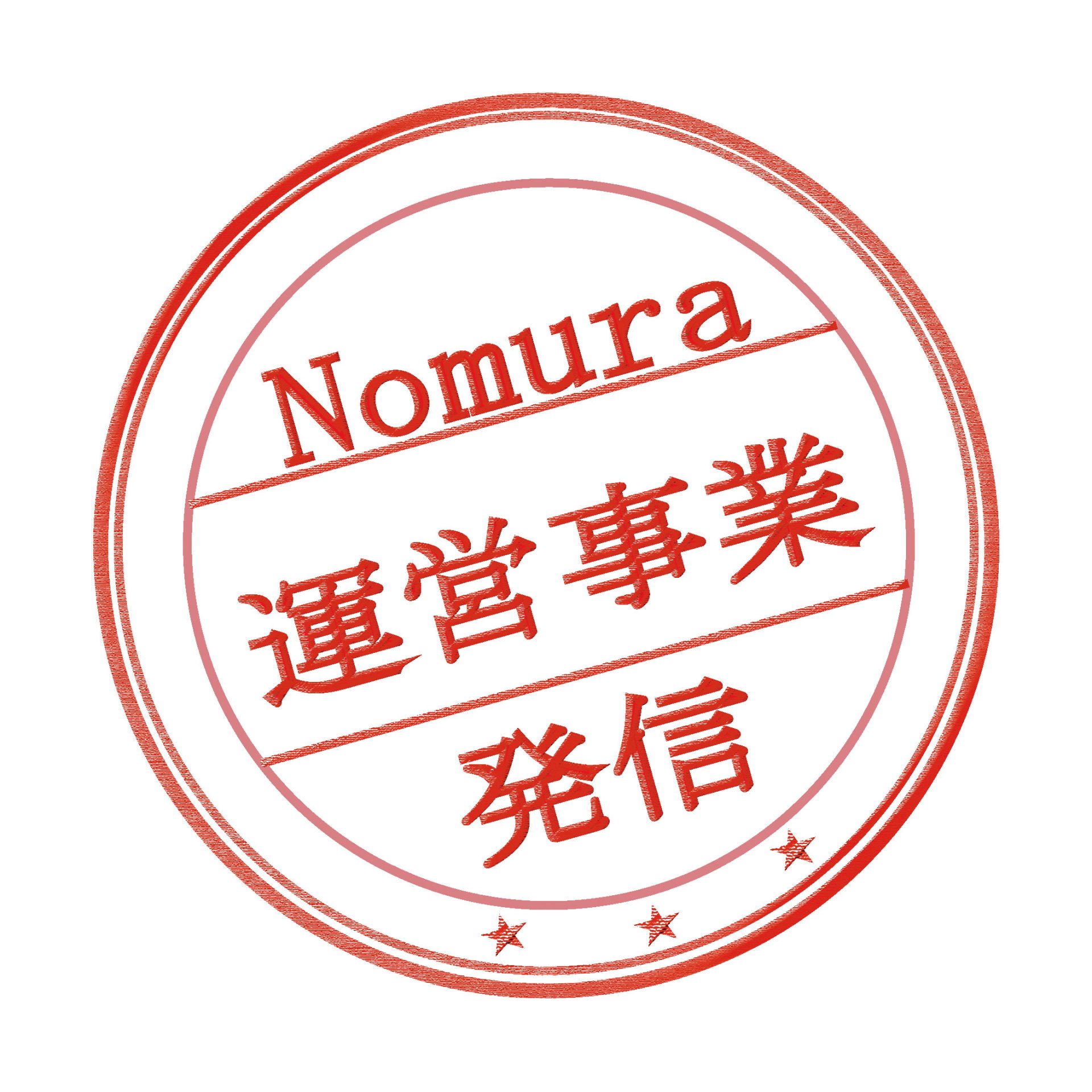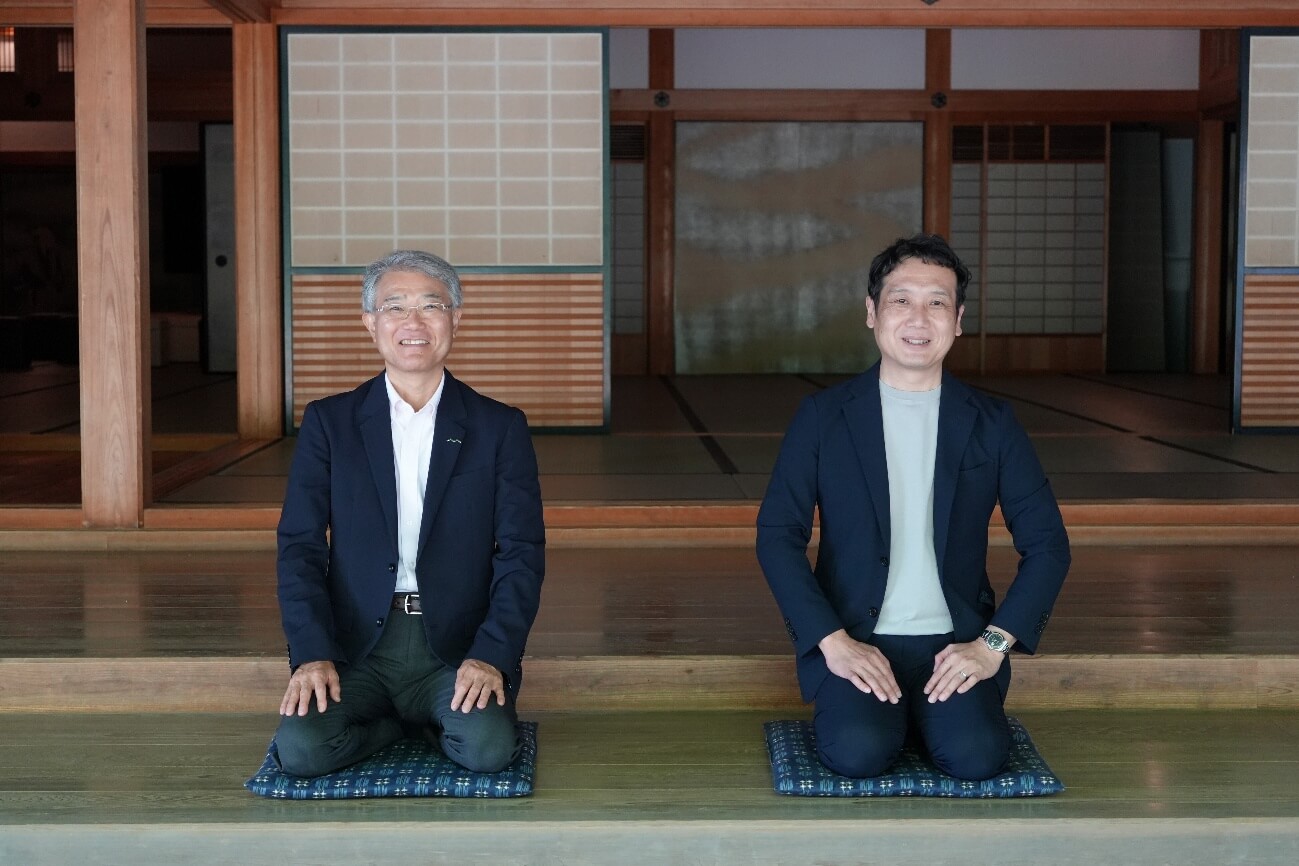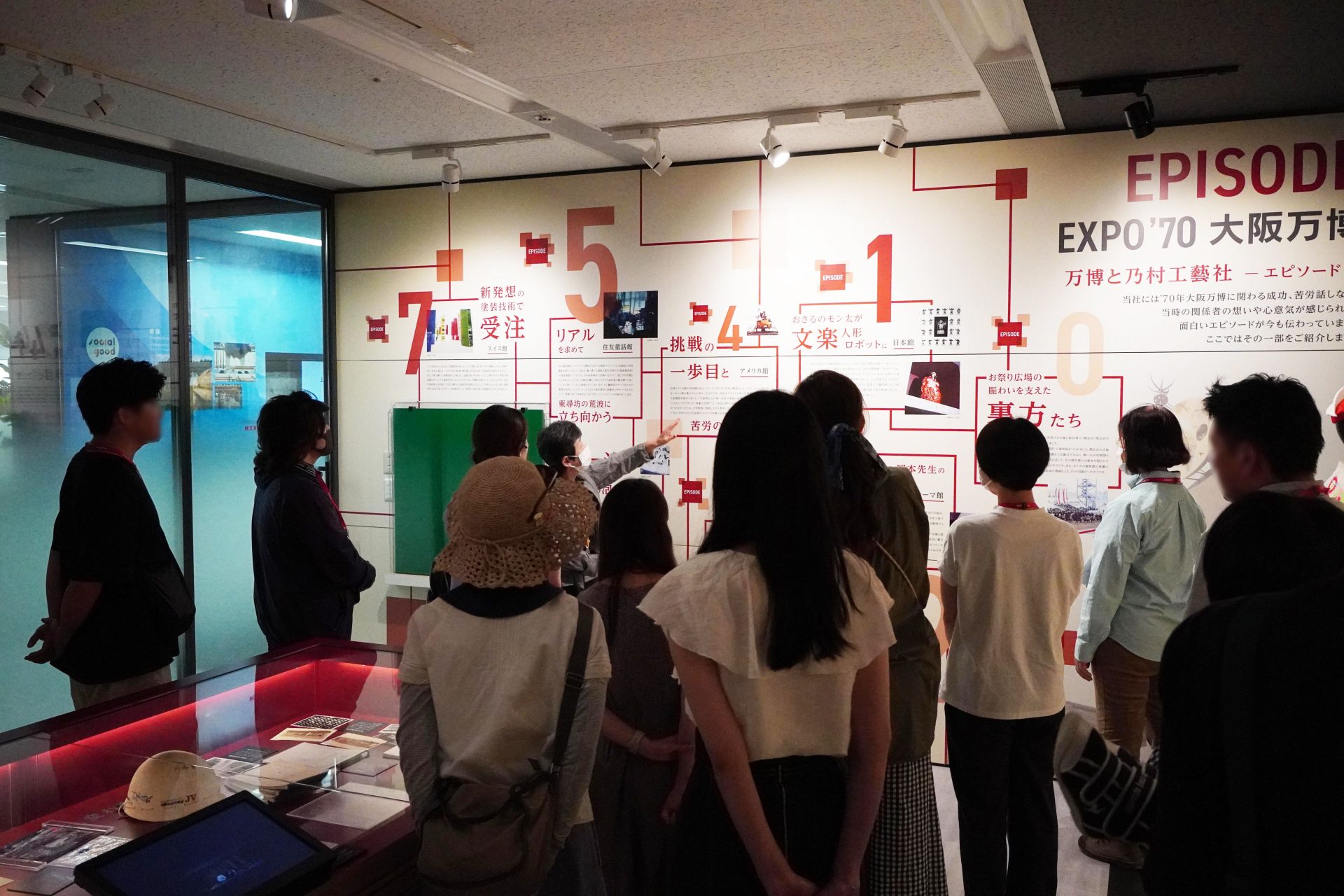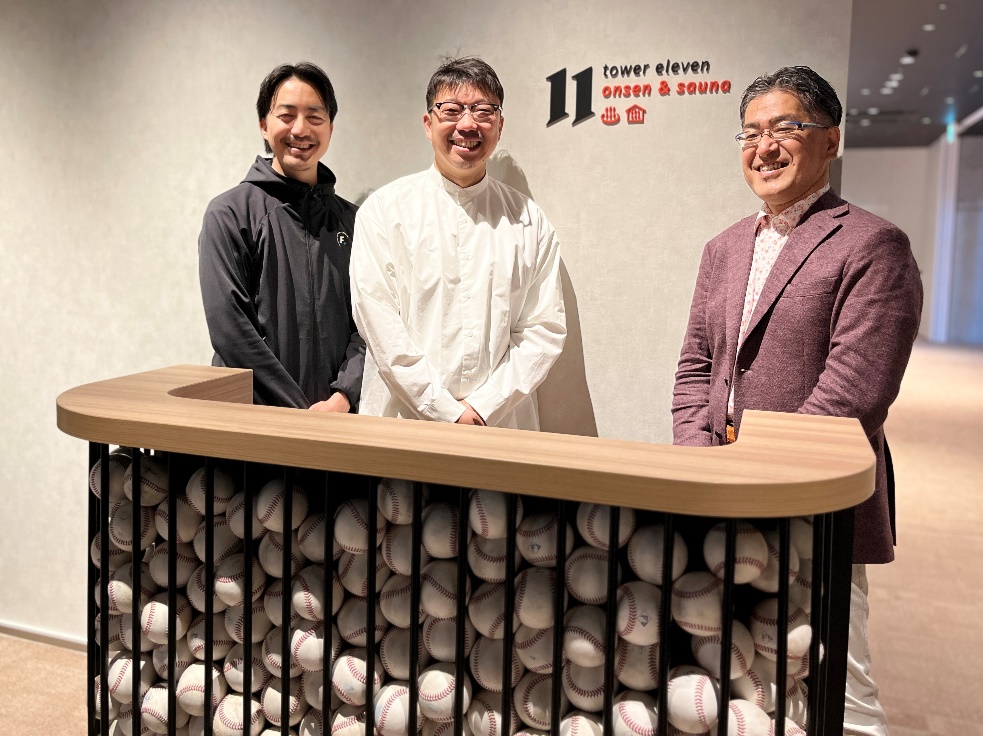
Sangetsu Group x NOMURA Co., Ltd. Co-creation Project: Comfortable school spaces for a sustainable future
2025/02/05- text and edit by
- Keita Kobayashi
[Interviewer]
Sangetsu Co., Ltd.
President's Office Corporate Planning Division
Masahiko Sakado (second from the left in the back row)
Space Design Kanto Section 2
Tomoyuki Katsunaki (back row, right)
Chubu Business Unit Chubu Branch Office Regional Division 2
Hanae Yamashita (front row right)
Market Development Unit
Naoto Kurata (second from the right in the back row)
Crearnate Co., Ltd. (Sangetsu Group)
Design Development Headquarters Design Department
Yayoi Yamanaka (second from the right in the front row)
NOMURA Co., Ltd. Co., Ltd.
Creative Headquarters, Planning and Production Center, Planning Department 1, Room 4
Keita Kobayashi (third from the left in the back row)
Konomi Taki (second from the left in the front row)
Creative Headquarters Creative Production Center No.10 Suzuki Room
Nao Kameda (front row, left)
Business Production Headquarters, Second General Affairs Department, New Field Project Development Department, Development Section 2
Kazuyoshi Hikota (third from the right in the back row)
Tetsuya Yamabayashi (back row, left)
The Sangetsu Group and NOMURA Co., Ltd., which share the common business domain of "spatial creation," launched a co-creation project aimed at solving social issues. As part of this project, they carried out an initiative in the library of Nagoya City Yamabuki Elementary School to think about new ways of creating learning spaces together with the children. Through workshops, they attempted to create a space that utilized the voices of the children.
Creating new spaces through corporate co-creation

Hikota
Our mission at NOMURA Co., Ltd. is to "deliver joy and excitement to people through spatial creation." Sangetsu's purpose also includes the words "joy and excitement," and their brand statement includes the words "Joy of Design - the joy of designing." The starting point of this project was realizing that we shared the same value of "joy." We felt that we could go beyond our existing relationship and create new value as a company involved in spatial creation.

Kurata
We have worked together in various ways up until now, but this time we came up with the idea to think about something new together. In particular, the perspective of thinking about the future by utilizing new resources was something we had never done before.
Kobayashi
We started our discussion with a big theme of how we can realize a well-being space by considering "joy". While considering possibilities in various fields, we decided to focus on two fields in particular: education and welfare. Then, we focused on the idea of "children in the center" of the Child and Family Agency and decided to work on creating a space for children.
Hikota
This project was not just about creating a space, but also an opportunity to think about how children will learn in the future and their quality of life. By working together as a company with an educational institution, we were able to gain a new perspective. It was especially valuable to be able to hear the children's voices directly.
A "child-centered" space that supports new learning
 Nagoya City Yamabuki Elementary School
Nagoya City Yamabuki Elementary School
Kurata
Yamabuki Elementary School is located in Nagoya, where our headquarters is located, and there are not many cases of local companies participating in the development of nearby schools, so we thought this was a good opportunity. I think it is very meaningful for a company to be able to carry out activities that are rooted in the local community.
Yamashita-san
Yamabuki Elementary School is a school that practices cutting-edge education, such as the free-paced learning method "YST (Yamabuki Select Time)" and the inter-grade inquiry learning method "Fureai Activities." Therefore, we wondered if we could create a space that corresponds to this new style of learning.
Hikota
In the field of education, both "individually optimized learning" and "collaborative learning" are emphasized. We aimed to create a "child-centered" space that realizes both of these things, where children learn together while respecting their individuality.
Kobayashi
There are plans to renovate schools all over the country. Children 10 or 20 years from now may be able to study in a comfortable environment, but I wondered what should be done for the children currently attending school. Of course, long-term plans are necessary, but I think we also need to think about short-term improvements for this year and next year at the same time.
Children's current situation and expectations for the space
Kobayashi
Children today lead very busy lives. It is not uncommon for them to be busy with extracurricular activities and cram schools until 8pm. I hear that they cannot take breaks of their own volition from the time they arrive at school until they get home.
waterfall
The way we spend time at school is also changing. In Scandinavian education, headphones and partitions are provided so that each child can study at their own pace, and there are sofas in the classroom. Progress is being made in creating spaces that cater to the diverse learning styles of children.
Sakado
Even in the office, there is a trend to work in an individual style. But at school, such individual time and space are limited. Even during breaks, you feel like you have to be with someone all the time. I think children also need a place where they can be alone.
Yamanaka
At Yamabuki Elementary School, they practice an education that values the autonomy of each child. The teachers also place importance on "mental safety and security," and I was impressed by their respect for each child's way of participating.
Yamashita-san
That's certainly true. During the meeting with the teachers, they said, "We want to value the choice of whether or not to participate in the workshop." They value being sensitive to the feelings of each and every child. We sympathized with Yamabuki Elementary School's stance of accepting children's diverse ways of learning and spending time.
Creating an ideal space with children–Workshop implementation
 January 2024: A workshop will be held at Nagoya City Yamabuki Elementary School to consider the ideal school space.
January 2024: A workshop will be held at Nagoya City Yamabuki Elementary School to consider the ideal school space.
Forest
What was the most memorable experience you had during the workshop?
Yamashita-san
Together with about 120 fifth graders (at the time), we thought about the ideal school space. Each child came up with specific ideas. Many of them had specific requests, such as "The library is dark, so I want to make it brighter" and "I want a space where I can study with friends." From these, we were able to identify three keywords: "concentration," "relaxation," and "interaction."

waterfall
What surprised me was the variety of opinions that came out, far more than I had expected. Some children want to participate in activities with others, while others want to relax on their own. Some want to immerse themselves in reading, while others want to socialize with friends. I realized the diversity of what is required from a school environment.
Kameda
Looking at the children's requests and ideas, we made some very interesting discoveries. I was particularly impressed by the expression "I want something soft." Adults might use words like "comfortable" or "relaxing," but I felt that the expression "soft" was unique to children. In fact, this desire for softness may represent an essential issue with school spaces. There are very few soft spaces on school grounds. Perhaps the only soft spaces are the beds in the nurse's office.
Katsunaki-san
What surprised me about listening to the children's opinions was that they even considered budgets and feasibility when speaking. Children today have a more realistic perspective than we think. But at the same time, they also told us their honest feelings, such as "I'm tired" and "I want to take a break." I was amazed at their sense of balance.
waterfall
From the perspective of valuing the individuality of each child, some children spoke a lot during the workshop, while others thought slowly and carefully, and each child's characteristics were apparent. Our challenge was how to utilize that diversity in the space.
Yamashita-san
Thanks to the cooperation of the teachers, the workshop went very smoothly. Each group had a child in charge of managing the time and organizing the ideas. The children had a good understanding of how they wanted to spend their time, and I felt that they wanted a space that suited that.
Sakado
That's right. They tried to be punctual, and when they ran out of ideas they came up with new suggestions. I was surprised at how well balanced the children were.
The birth of the upcycled bench"Everyone's Rainbow Donut"


Kameda
As I mentioned earlier, in response to the children's request for something "soft," we started by choosing the materials. We wondered if we could come up with a proposal that would meet the children's requests by using Sangetsu's chair fabric and paper tubes. At the same time, we also wanted to value a sustainable perspective.
Kobayashi
Sangetsu also provided paper tubes for Minato Ward Odaiba Gakuen's Odaiba Aquarium Project.
Katsunaki-san
We paid particular attention to the selection of materials. We used a soft, cushioned material for the seat, and coordinated the color and pattern of the chair fabric to match the interior of the library. We also incorporated sustainable elements by reusing about 100 paper tubes and using discontinued chair fabric. The shape is also designed to be circular, making it easier for children to gather around.
Yamashita-san
The children enjoyed reading in their own way. Some went inside to read, others leaned against it. It was a free space that was not bound by any set rules. They were not talking to each other, but they were all sitting close together. Each child was reading a book, but somehow it seemed that they wanted to be close to each other.
waterfall
I used to go to the library a lot when I was a child. I would go to read books I liked, but I also liked going with friends and reading different books. Even if we didn't talk, spending time together with someone was reassuring. I think that "Everyone's Rainbow Donuts" provides just that kind of place.
Kobayashi
It's also unique in that it is made up of eight pieces.
Kameda
We had originally planned to have it as a single unit, but the vice principal suggested that we make it divisible. This allows for more freedom in the layout and allows for a variety of uses. In fact, the children can use it flexibly depending on the situation, expanding the circle for events, or splitting into smaller groups for everyday use.
The significance of upcycling and environmental education
Kurata
Our industry actually produces a considerable amount of scraps and waste materials. This project has shown us new possibilities for making effective use of these materials.
Sakado
Sometimes materials that are still fully usable, such as paper tubes and wallpaper, end up being discarded. By reusing these materials, we were able to create an environmentally friendly space. At the same time, it was a good opportunity for children to learn about the potential of these materials.
Kobayashi
The children's reactions at the unveiling ceremony were also delightful.
 November 2024: "Everyone's Rainbow Donuts" unveiling ceremony, where materials such as paper tubes were explained
November 2024: "Everyone's Rainbow Donuts" unveiling ceremony, where materials such as paper tubes were explained
Yamashita-san
In a naming contest to encourage children to become attached to the product, most of the children came up with names and suggested them. All of the proposed names were impressive, as they were full of ideas unique to children. I was particularly impressed by the richness of the children's sensibilities when they decided on the name "Everyone's Rainbow Donut."
Kobayashi
I would never have imagined that a bench would be depicted as a donut. There were many other unique ideas, and I was very surprised by the children's ideas.
Sakado
At the unveiling ceremony, children showed great interest in the craft and art materials made from recycled paper tubes and wallpaper samples. This may have also been an opportunity to develop environmental awareness.
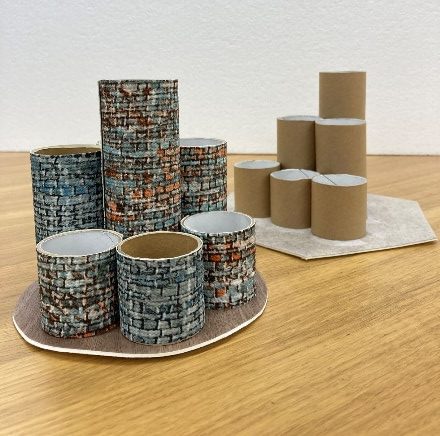 A pen holder made from recycled paper tubes and wallpaper samples
A pen holder made from recycled paper tubes and wallpaper samples
The possibilities of school space starting from the library

Kobayashi
Through this project, I feel that the library will be a key point in "upcycling school spaces." Although a large-scale renovation of the entire building is difficult, we can start the change with one space, the library. It is not just a physical renovation, but also a redefinition of the meaning and value of the space.
Hikota
I think libraries have great potential. We have a fixed idea that they are places where you have to be quiet, but in fact, some people spend time relaxing alone, while others gather together and talk. Libraries have the potential to meet such diverse needs. I feel that they can be reimagined as new places of learning that go beyond the conventional concept of a library.
Yamashita-san
In the cafeteria at our Nagoya office, we changed the layout by adding more counter seats and creating a space that even people can feel comfortable in. Based on that experience, I think that by creating a space that can be used casually by people or by others in elementary schools, we can be more sympathetic to the feelings of children.
waterfall
Libraries are no longer just places to read books, but are also beginning to function as places for local communication. We thought that school libraries could also become places with new possibilities, not just places to read books.
Kurata
It was a great learning experience for us to be able to carry out this project at a school with advanced educational practices like Yamabuki Elementary School. If the effectiveness of educational space reform can be demonstrated through this project, we believe it will serve as an opportunity for more schools to take on new initiatives.
Sakado
School is a place where children spend most of their day. By reconsidering the nature of this space, it is possible to change the quality of learning. We feel that this initiative is the first step in that direction. We hope to expand such initiatives further in the future.
Yamanaka
The interesting thing about this project is that it shows how a little ingenuity can greatly change the value of a space. The children's voices helped us discover new possibilities for the library. I think this could be a hint for other school spaces.
[After the interview]
The Sangetsu Group and NOMURA Co., Ltd. co-creation project involved listening sincerely to the voices of children and putting them into practice the process of giving shape to them. The completed "Everyone's Rainbow Donut" created new spatial value through the upcycling technique. We hope that the new library style realized through this project will provide an important hint when considering the future of educational spaces.
Like this article?

